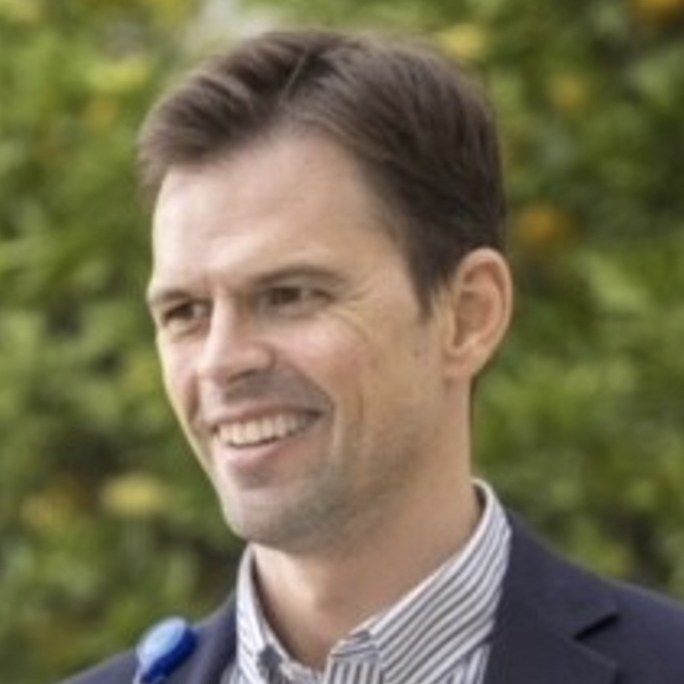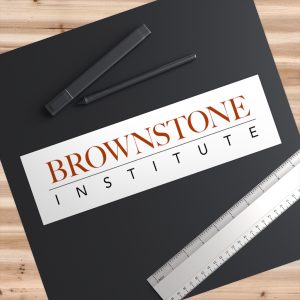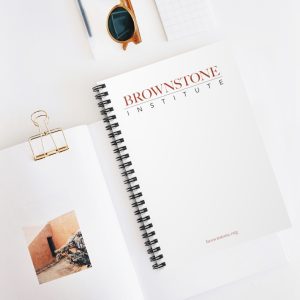Last year, Jacob Siegel at Tablet magazine published a long investigative piece on the censorship-industrial complex, “A Guide to Understanding the Hoax of the Century,” which is well worth reading. More recently, he published a superb follow-up essay, “Learn This Term: ‘Whole of Society,’” which is crucial for understanding our current political and cultural moment, and for grasping the real dynamics of power at work today. I want to provide here just a few highlights from the piece, which opens:
To make sense of today’s form of American politics, it is necessary to understand a key term. It is not found in standard US civics textbooks, but it is central to the new playbook of power: “whole-of-society.”
The term was popularized roughly a decade ago by the Obama administration, which liked that its bland, technocratic appearance could be used as cover to erect a mechanism for the government to control public life that can, at best, be called “Soviet-style.” Here’s the simplest definition: “Individuals, civil society, and companies shape interactions in society, and their actions can harm or foster integrity in their communities. A whole-of-society approach asserts that as these actors interact with public officials and play a critical role in setting the public agenda and influencing public decisions, they also have a responsibility to promote public integrity.”
In other words, the government enacts policies and then “enlists” corporations, NGOs, and even individual citizens to enforce them—creating a 360-degree police force made up of the companies you do business with, the civic organizations that you think make up your communal safety net, even your neighbors. What this looks like in practice is a small group of powerful people using public-private partnerships to silence the Constitution, censor ideas they don’t like, deny their opponents access to banking, credit, the internet, and other public accommodations in a process of continuous surveillance, constantly threatened cancellation, and social control.
Totalitarian systems constitute the perfected forms of the “whole-of-society” approach. There is an additional feature here we should not miss:
“The government”—meaning the elected officials visible to the American public who appear to enact the policies that are carried out across the whole of society—is not the ultimate boss. Joe Biden may be the president but, as is now clear, that doesn’t mean he’s in charge of the party.
Siegel explains the historical development of the whole-of-society approach during the Obama administration’s attempt to pivot in the “war on terror” to what it called CVE—countering violent extremism. The idea, much like the pre-crime unit depicted in the film Minority Report, was to surveil the American people’s online behavior in order to identify those who may—at some unspecified time in the future—commit a crime. This supposedly would allow authorities to somehow intervene before the person engaged in violence. One feature of such a scheme is that it would be impossible to prove—or disprove—that it is working. “Imagine all the crimes that did not happen because we did this” does not constitute real evidence.
In any case, the real aims lie elsewhere. As Siegel explains, “the true lasting legacy of the CVE model was that it justified mass surveillance of the internet and social media platforms as a means to detect and de-radicalize potential extremists.” For inherent in the very concept of the potential “violent extremist,” who has as yet committed no crime, is a weaponized vagueness. A cloud of suspicion hangs over anyone who challenges the prevailing ideological narratives.
Siegel continues:
A decade after 9/11, as Americans wearied of the war on terror, it became passé and politically suspicious to talk about jihadism or Islamic terrorism. Instead, the Obama national security establishment insisted that extremist violence was not the result of particular ideologies and therefore more prevalent in certain cultures than in others, but rather its own free-floating ideological contagion [which could, presumably, infect anyone]. Given these criticisms Obama could have tried to end the war on terror, but he chose not to. Instead, Obama’s nascent party state turned counterterrorism into a whole-of-society progressive cause by redirecting its instruments—most notably mass surveillance—against American citizens and the domestic extremists supposedly lurking in their midst.
All of us became suspects, all potentially dangerous, all in need of close monitoring. Siegel summarizes how this approach has evolved since 2014 and the uses to which it has been put in the intervening years:
The whole-of-society trope can be traced from its initial popularization in the context of CVE in 2014-15 to its use as a censorship coordinating mechanism after the rise of Donald Trump initiated a panic over Russian disinformation, then as a call for increased social media clampdowns during COVID, to the present—where it functions as a generic slogan and coordinating mechanism of a party state, one originally built by Obama, and which now operates through the vehicle of the Democratic Party over which he presides.
What the various iterations of this whole-of-society approach have in common is their disregard for democratic process and the right to free association, their embrace of social media surveillance, and their repeated failure to deliver results. Indeed even [Nicholas] Rasmussen [former director of the U.S. National Counterterrorism Center], while advocating the whole-of-society approach, acknowledges that it “promises to be in many ways more messy, more complicated, and more frustrating in terms of delivering outcomes.” In other words, one shouldn’t count on it working.
That is to say, we should not count on it working to accomplish its publicly stated purposes. It may, however, prove very effective in advancing other political and ideological ends:
Not that such flaws are disqualifying. In the same way that a particular politician’s poor standing with voters does not seem to discourage the party from anointing them as long as they can be trusted to serve its interests, the whole-of-society strategy remains attractive regardless of its outcomes, because it extends the party’s authority over formerly independent centers of power.
This is the real reason for the embrace of the whole-of-society model. Siegel summarizes how this approach functioned in the context of censorship, an issue I have written about extensively here at Human Flourishing:
Indeed, whole-of-society is a totalizing form of politics. As the name implies, it discards the traditional separation of powers and demands political participation from corporations, civic groups, and other nonstate actors. Mass surveillance is the backbone of the approach, but it also consolidates a new class of functionaries who all directly or indirectly work for the party’s interests. This is exactly how the party carried out its mass censorship during COVID and the 2020 election: by embedding government officials and party-aligned “experts” from the for-hire world of nonprofit activism, inside the social media platforms. The result, as I chronicled in an investigative essay last year, was the largest campaign of domestic mass surveillance and censorship in American history—often censoring true and time-sensitive information.
As I explained in The New Abnormal these extra-constitutional power grabs were facilitated by declared states of emergency—the “state of exception” that supposedly justified totalizing measures of control. Recent history provides a broader context for governing under a state of emergency. Since World War II, the “state of exception” is no longer exceptional: in both democratic Western nations and elsewhere, declared states of emergency have frequently become the norm, continuing in some countries for decades. In 1978, approximately thirty countries were operating under a state of emergency. This rose to seventy countries by 1986.
In response to the pandemic, 124 countries declared a state of emergency in 2020, with several more declaring emergencies in specific provinces and municipalities. Even prior to the pandemic, many nations operated under routinized, ongoing states of emergency. As of February 2020, there were thirty-two active national emergencies in the US that had not been sundowned, the oldest dating back thirty-nine years, and each renewed by presidential administrations from both parties.
Legal changes in Anglo-American nations over the past several decades paved the way for the state of exception to increasingly become the norm. As we saw during the pandemic, the state of exception is an essential tool deployed by the biomedical security state. The Italian philosopher Giorgio Agamben, who has studied the state of exception extensively, uses the term “biosecurity” to describe the government apparatus consisting of a new religion of health combined with state power and its state of exception: “an apparatus that is probably the most efficient of its kind that Western history has ever known.”
Declared states of emergency, and the need to rescue groups anointed as vulnerable victims, supply the pretext for implementing the whole-of-society approach, as Siegel explains:
To avoid the appearance of totalitarian overreach in such efforts, the party requires an endless supply of causes—emergencies that party officers, with funding from the state, use as pretexts to demand ideological alignment across public and private sector institutions. These causes come in roughly two forms: the urgent existential crisis (examples include COVID and the much-hyped threat of Russian disinformation); and victim groups supposedly in need of the party’s protection.
More recently, the whole-of-society political machinery facilitated the overnight flip from Joe Biden to Kamala Harris, with news media and party supporters turning on a dime when instructed to do so—democratic primary voters be damned. This happened not because of the personalities of the candidates involved, but on the orders of party leadership. The actual nominees are fungible, and entirely replaceable, functionaries, serving the interests of the ruling party.
It is hopeful to imagine that it was Harris’ extraordinary grit and leadership, largely hidden until now, that enabled her to “take over the party” so swiftly, but the truth is less dramatic. The party was delivered to her because she was selected by its leaders to act as its figurehead. That real achievement belongs not to Harris, but to the party-state. The question you might have is how it managed to put up a new candidate for president in just a matter of weeks. The answer is that the party had repeated opportunities over the past 10 years to train its whole-of-society apparatus in the rapid coordination of mass events. This was the payoff.
For those of us who don’t want to be ruled by a whole-of-society party-state, the pressing political question is how to dismantle this machinery. Whatever the remedy, it must involve a reestablishment of the separation of powers and the crucial distinction between government and the independent institutions of civil society. The total merger of the state and corporate power, of the state and non-state actors, has a name: fascism—a word that literally means “to bind together”. Mussolini’s own description of Italian fascism was straightforward: “All within the state, nothing outside the state, nothing against the state.”
We now know its new name: “whole-of-society”.
Republished from the author’s Substack
Join the conversation:

Published under a Creative Commons Attribution 4.0 International License
For reprints, please set the canonical link back to the original Brownstone Institute Article and Author.









